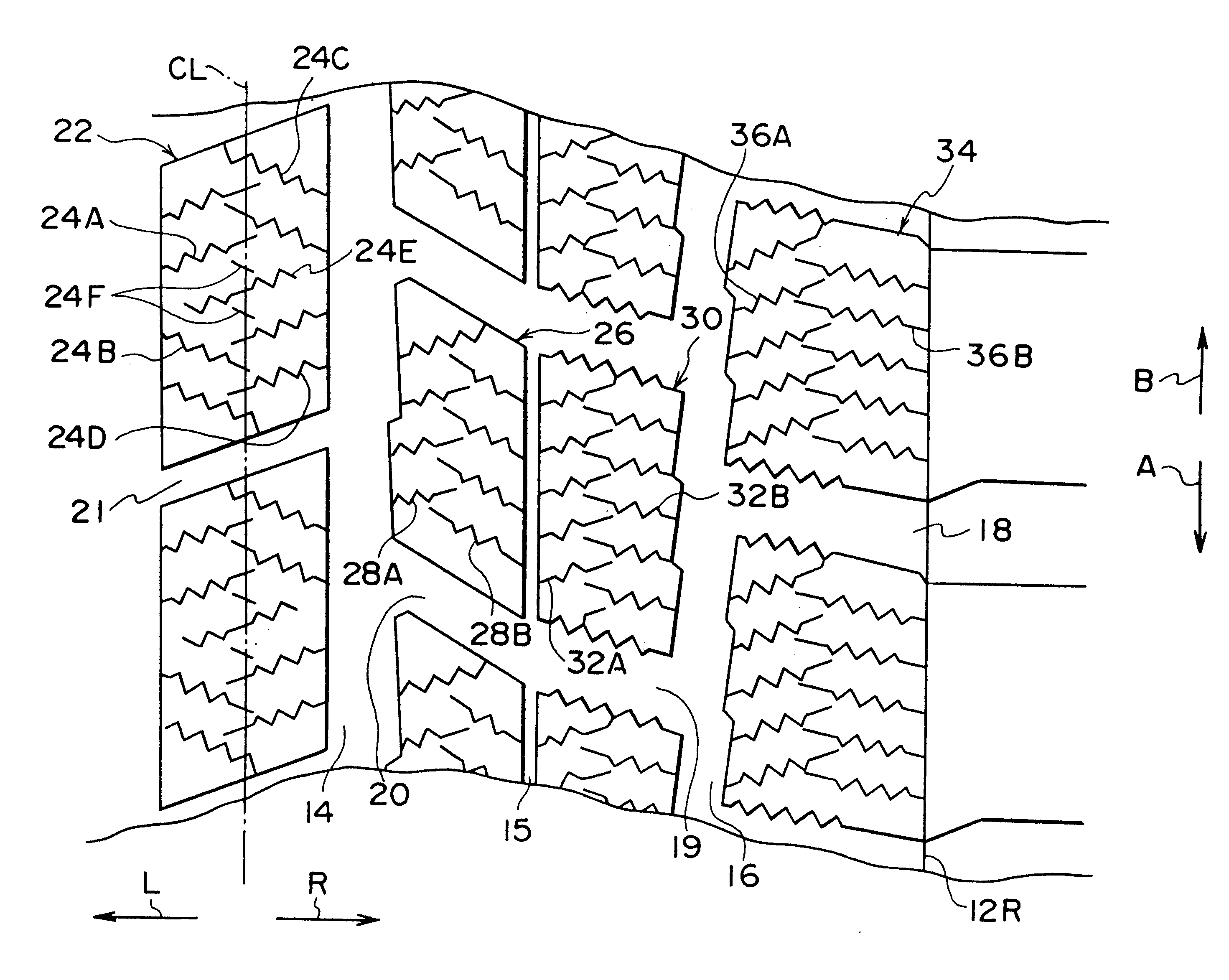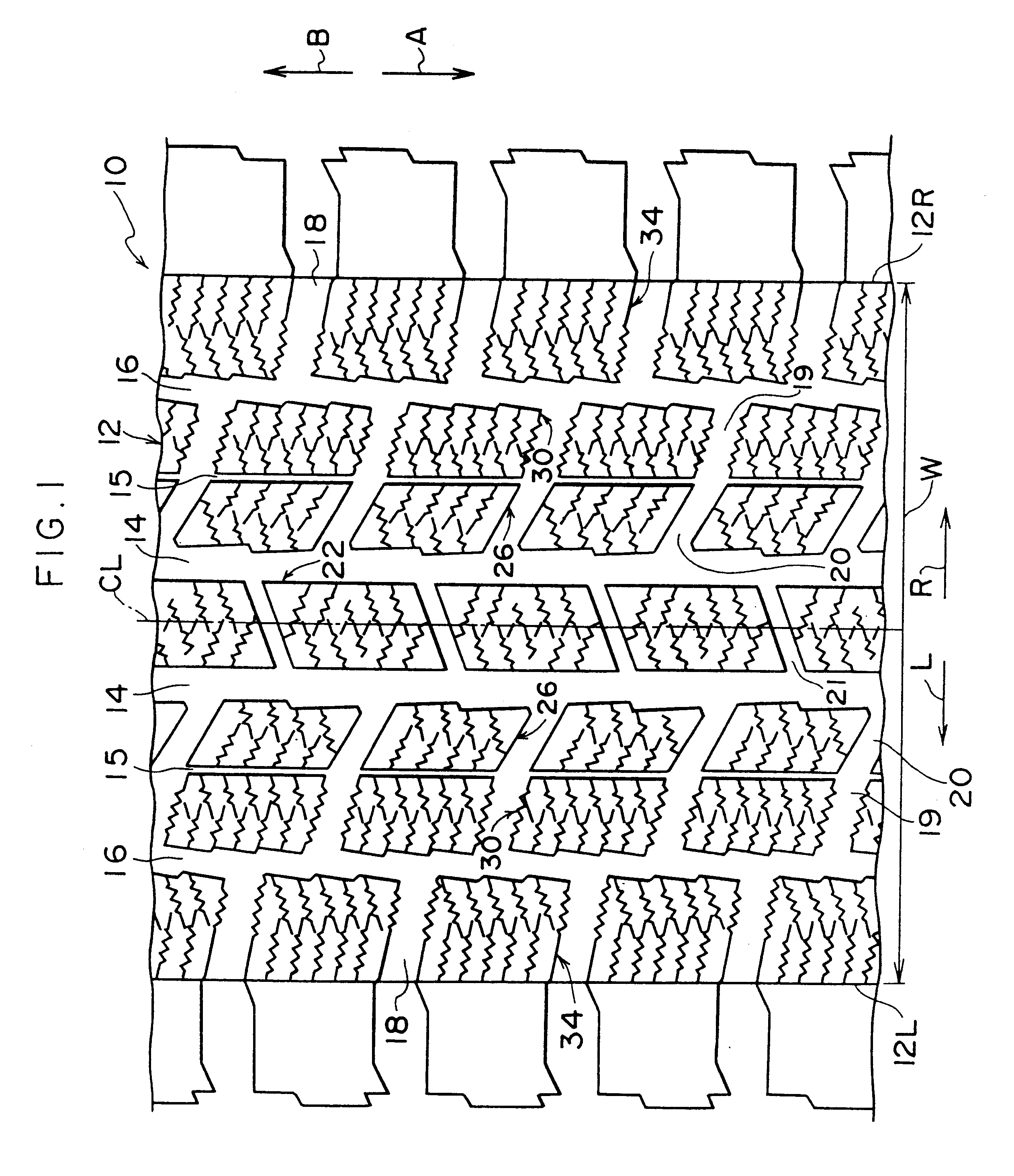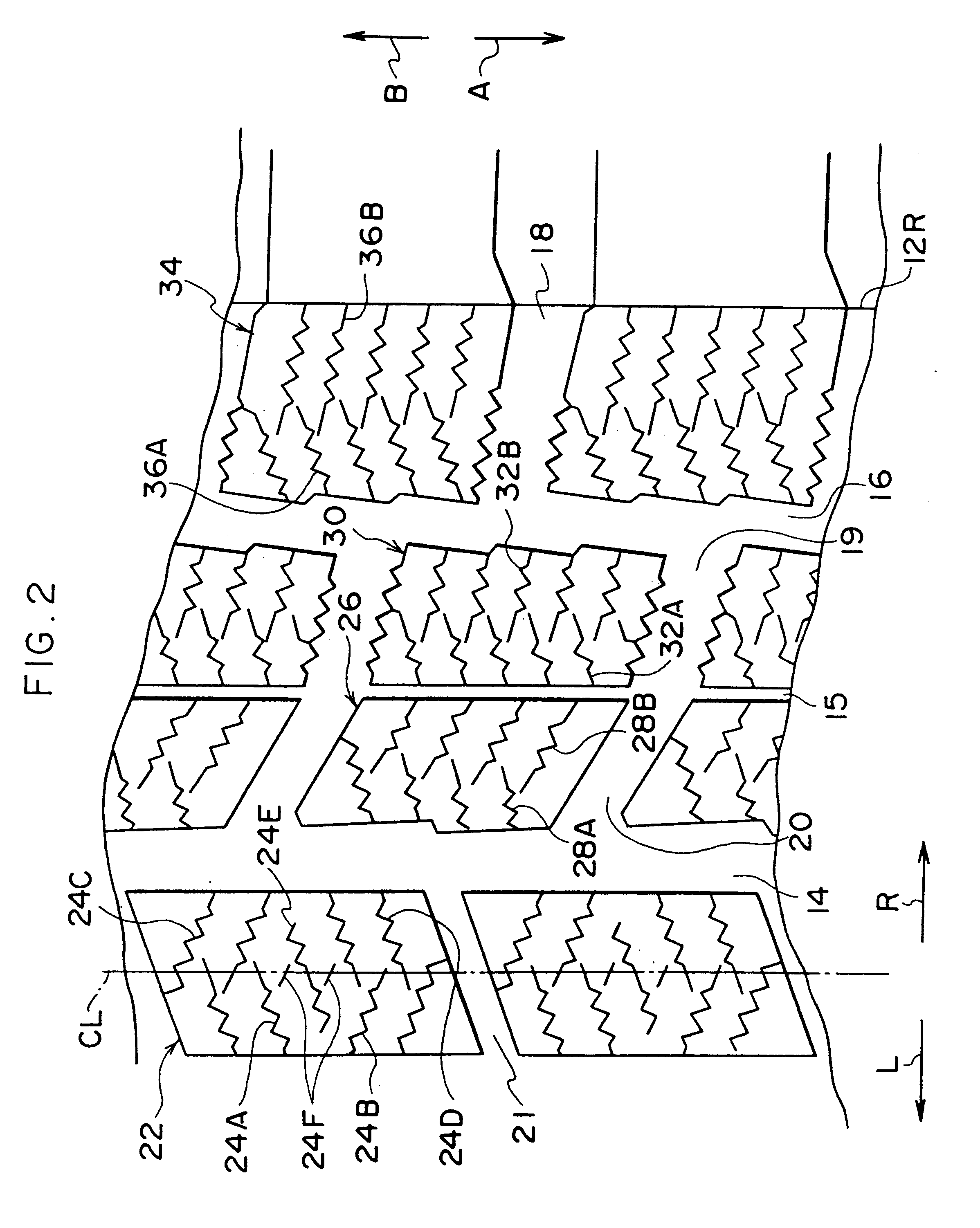Pneumatic tire having tread including pairs of sipes
a pneumatic tire and tread technology, applied in the field of pneumatic tires, can solve the problems of difficult to obtain suitable properties for both braking and traction, insufficient controllability at small steering angles, and ineffective method of forming sipes, etc., to achieve the effect of improving braking and traction properties, reducing friction, and reducing friction
- Summary
- Abstract
- Description
- Claims
- Application Information
AI Technical Summary
Benefits of technology
Problems solved by technology
Method used
Image
Examples
first embodiment
a pneumatic tire 10 in accordance with the present invention will be described with reference to FIGS. 1 and 2.
In FIG. 1, the arrow L and the arrow R show the leftward direction and the rightward direction, respectively, of the tire (both directions may be referred to as the axial direction of the tire). The arrow A and the arrow B shows the direction of rotation of the tire and the direction of tire travel relative over a ground surface, respectively, for the lowest portion of the tire (both directions may be referred to as the circumferential direction of the tire).
As shown in FIG. 1, in the tread 12 (W represents the width of the tread) of the pneumatic tire 10 of the present invention, circumferential broad grooves 14 extend in the circumferential direction of the tire at both sides of the tire equatorial center line ("CL") plane. At the tire axial direction outer side of each circumferential broad groove 14, circumferential narrow grooves 15 extend substantially in the circumfe...
examples 4 to 8
Pneumatic tires having a size of 225 / 50R16 and the tread pattern shown in FIG. 8 were prepared for the conditions shown in Table 3. The prepared tires were attached to rims having a size of 7J and inflated at an inner pressure of 200 kPa. The tires were mounted on a vehicle, subjected to the road test and evaluated with respect to properties on snow such as the acceleration and cornering properties, properties on ice, properties on dry road surfaces such as the braking and controllability and properties on wet road surfaces such as braking and controllability based on the feel. The methods of the evaluation were the same as those described above except that the result was expressed as an index using the result of the tire of Example 4 which was set at 100. The tire of Examples 4 to 8 had the tread having the block pattern shown in FIGS. 29 to 33, respectively. The greater the number, the better the result. The results are shown in Table 3.
TABLE 3 Exam- Exam- Exam- Exam- Exam- ple 4 ...
examples 9 to 12
Pneumatic tires having a size of 225 / 50R16 and the tread patterns shown in FIGS. 10A, 10B and 10C were prepared for the conditions shown in Table 4. The prepared tires were attached to rims having a size of 7J and inflated to an inner pressure of 200 kPa. The tires were attached to a vehicle, subjected to the road test and evaluated with respect to properties on snow such as the acceleration and cornering properties, properties on ice, properties on dry road surfaces such as braking and controllability and properties on wet road surfaces such as the braking and controllability based on the feel. The methods of the evaluation were the same as those described above. The methods of the evaluation were the same as those described above except that the result was expressed as an index using the result of the tire of Example 9 which was set at 100. The tire of Examples 9 to 12 had the tread having the block pattern shown in FIGS. 29 and 34 to 36, respectively. The greater the number, the ...
PUM
 Login to View More
Login to View More Abstract
Description
Claims
Application Information
 Login to View More
Login to View More - R&D
- Intellectual Property
- Life Sciences
- Materials
- Tech Scout
- Unparalleled Data Quality
- Higher Quality Content
- 60% Fewer Hallucinations
Browse by: Latest US Patents, China's latest patents, Technical Efficacy Thesaurus, Application Domain, Technology Topic, Popular Technical Reports.
© 2025 PatSnap. All rights reserved.Legal|Privacy policy|Modern Slavery Act Transparency Statement|Sitemap|About US| Contact US: help@patsnap.com



